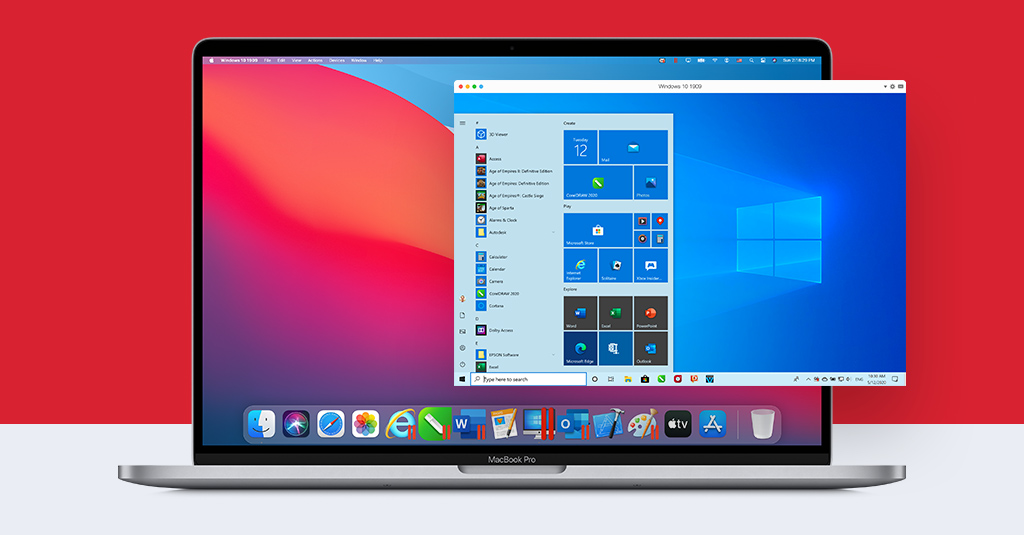

- Run windows parallel on mac install#
- Run windows parallel on mac full#
- Run windows parallel on mac software#
- Run windows parallel on mac Pc#
Virtualization software has become increasingly popular in some IT circles as a way, for instance, for programmers running Linux to write code for Windows systems, for help desks to support users running multiple Windows versions, or for network servers to serve applications designed for a range of operating systems.
Run windows parallel on mac full#
Without needing to translate instructions from one CPU to another, performance can be much better – much closer to full speed. Instead of emulation, software can make use of virtualization – letting the Intel CPU set up a virtual Intel-powered computer running in a portion of the computer’s memory. Virtualizationīut because these new Macs use the same Intel CPUs as other PCs, there’s no longer any need for those sorts of translations.
Run windows parallel on mac Pc#
Because they are designed at a low level specifically for the PowerPC CPU used on pre-2006 Macs, emulators like Virtual PC and Guest PC don’t run on the new Intel-powered Macs. Emulation requires translating software instructions meant for one CPU into instructions designed for another, and – like translating from Chinese to English – it’s inevitably slower than just working in a single language. The Mac operating system is still running allowing the Mac owner to treat the PC operating system and its applications as just another program, switching from one to the other without needing to restart the Mac.
Run windows parallel on mac install#
PC emulation software has long been available for the Mac, with programs like Virtual PC, SoftPC, and GuestPC letting Mac owners install and run a wide range of PC operating systems within a window on their Mac.

Emulation Pros and Consīut many Mac owners have long been making use of another way to run multiple operating systems. Only one operating system runs at a time, but it gets full use of all the computer’s hardware resources. Boot Camp Pros and ConsĪ bit of background: Apple’s Boot Camp, like an earlier hacker-built solution, lets users partition their Intel-Mac’s hard drive in order to install another operating system (in Boot Camp’s case, Windows XP only) and allow the user to choose to boot into either Mac OS X or the other operating system. This software solution for running other PC operating systems is more flexible than Apple’s Boot Camp, and for many users, it may prove to be a better solution. announced a version of its virtualization software, Parallels Workstation for Intel Macs. But at almost the same time, little-known Virginia-based Parallels, Inc. etc.Apple’s Boot Camp got the most attention recently as a way to run Windows on the new Intel-powered Macs. Perhaps it's the display mode of your other OS. Kill processes and see when it starts to cool down. Once the MacBook starts getting hot, start looking at what the client is running. If there are multiple client OSs running, try just one at a time for an extended session. What client OS(s) are installed in Parallels? Have you had heat issues prior to using Parallels? I doubt that Parallels is the actual problem. There has got to be something else going on.

I also have a few end users running Parallels on their various models of MBPs and they haven't been having issues either. Heat/fanspeed with the VM on has never been a problem for me. On the MBP I'm using to answer this post. I run multiple virtuals on multiple platforms. Outlook, Firefox and other apps are commonly surpassing it for use. When idle, my Win7 VM takes single-digit CPU percentage. You need to audit within the VM for apps that are taxing the CPU. Sounds to me like there's something in your VM that's taking significant processor cycles, which leads to the heat generation. If your VM isn't making significant demands on the processor, the CPU overhead is on par with other idle apps. "If virtualization, then hot" is not always true- CPU use is proportional to the load placed by the virtual environment.


 0 kommentar(er)
0 kommentar(er)
